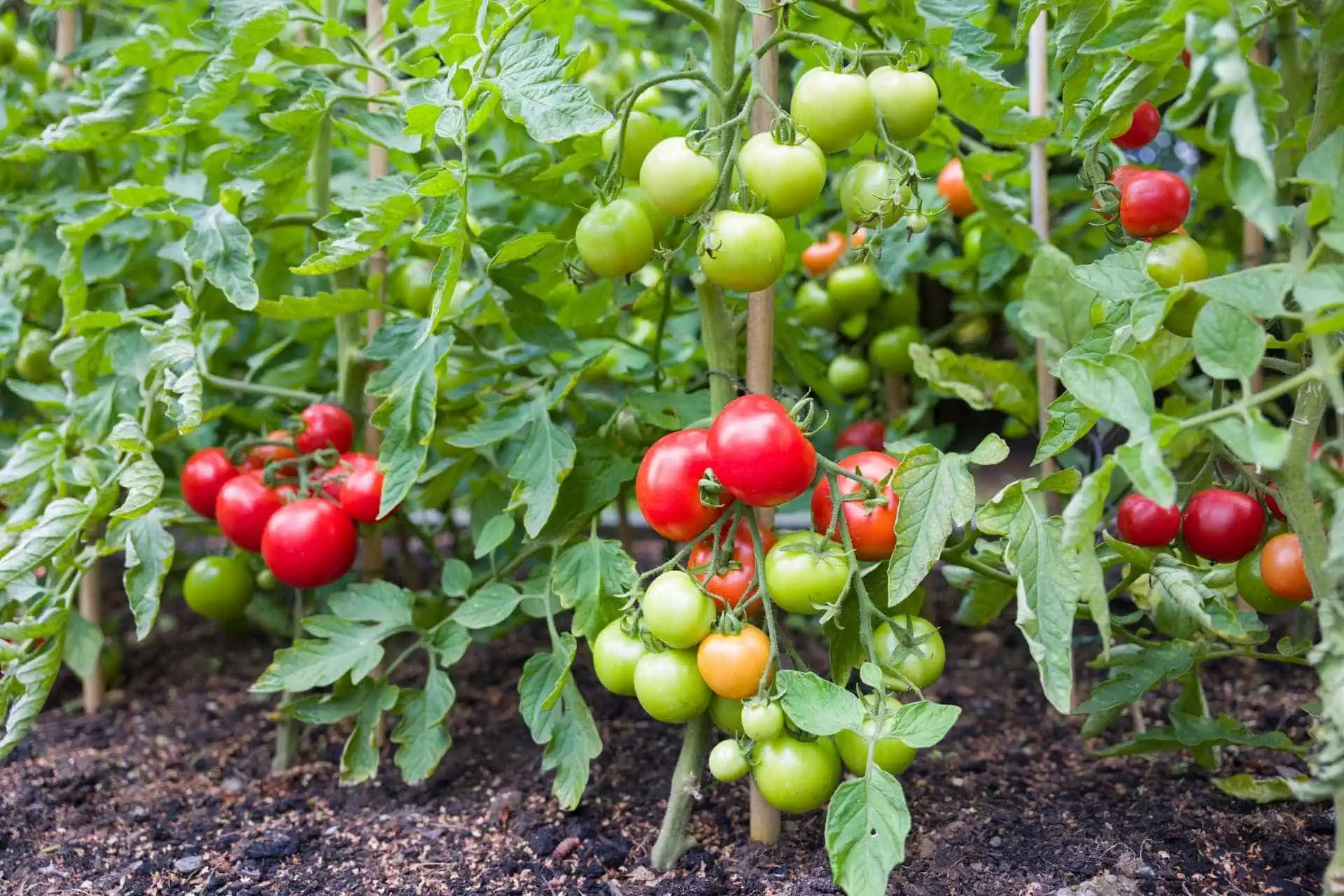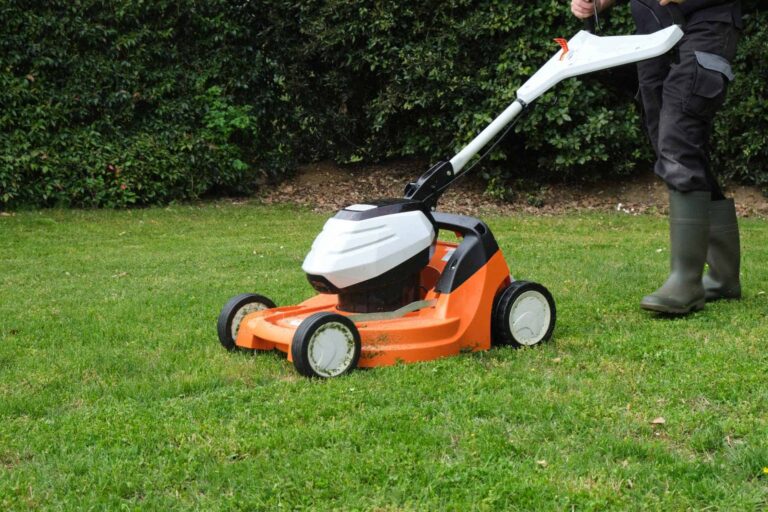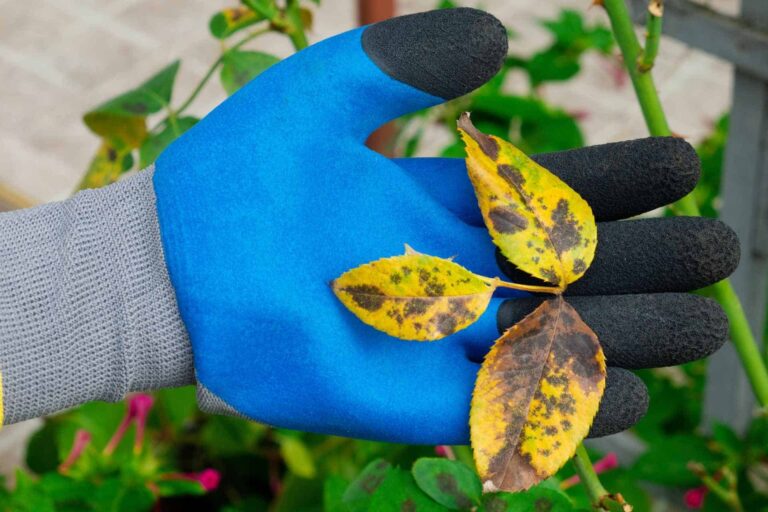Tomato Growing Tips: Techniques for Healthier Plants and Bigger Harvests
Tomatoes, a staple in many kitchens, are not just versatile culinary gems but also pack a nutritional punch. They are rich in vitamins, minerals, and antioxidants, particularly lycopene, known for its wide-ranging health benefits. Growing tomatoes at home can not only be an economical alternative but also a rewarding hobby, providing a sense of accomplishment and the joy of tasting a homegrown, fresh harvest. However, tomato cultivation requires more than just sowing seeds and waiting for the plants to bear fruit. It involves understanding the plant’s growth preferences, nutritional needs, and potential threats. This guide explores fundamental and advanced techniques to enhance your tomato farming experience, ensuring healthier plants and bountiful harvests. Let’s unlock the rewarding journey of tomato cultivation together.
Basic Tomato Growing Tips
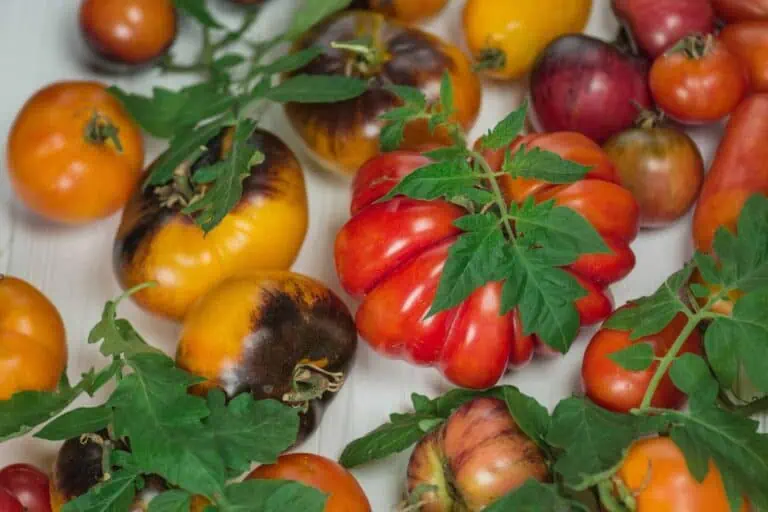
Choosing the right variety of tomato is the first step towards a successful harvest. Each variety has its unique taste, growth habit, and resistance to certain diseases. For instance, cherry tomatoes are perfect for salads and snacking, while beefsteak or Roma tomatoes are preferred for sauces and canning due to their robust flavor and meaty texture. If you’re new to tomato growing, consider starting with varieties that are known for their hardiness and ease of growth, like ‘Early Girl,’ ‘Cherry Gold,’ or ‘Roma.’ Always ensure to choose varieties that are suitable for your local climate and growing conditions. Whether you’re planting from seeds or seedlings, sourcing your tomatoes from a reputable nursery can make all the difference in the quality of your harvest.
Timing and Location for Planting
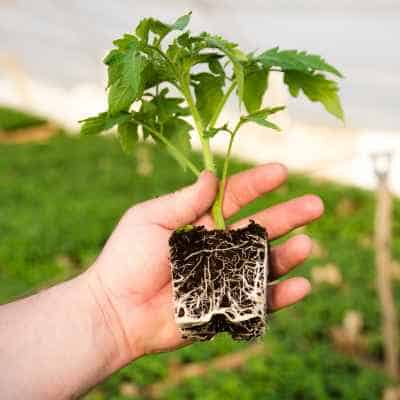
Understanding the right timing for planting tomatoes is crucial for their growth and fruit production. As warm-season plants, tomatoes thrive in temperatures between 65 and 85 degrees Fahrenheit. Thus, the optimal time for planting is after the last frost of spring when soil temperatures have warmed up sufficiently. Starting seeds indoors about 6 to 8 weeks before the expected last spring frost date can give your tomatoes a head start.
As for location, tomatoes require a minimum of six hours of direct sunlight each day for proper growth. Choose a site that receives ample sunlight and has well-draining soil. If space is a constraint, consider growing tomatoes in containers, which can be placed on sunny patios or balconies. Remember, whether in-ground or in containers, ensure a spacing of about 24 to 36 inches between plants for adequate air circulation and growth.
Soil Preparation and Fertilization
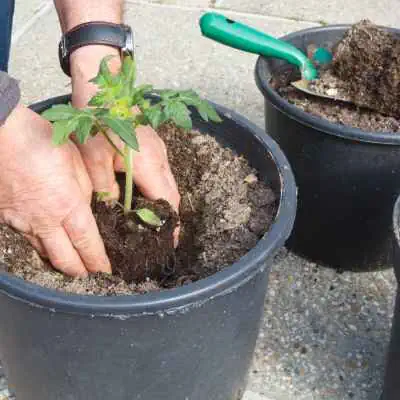
Proper soil preparation is essential for healthy tomato plants. Start with a soil test to identify any nutrient deficiencies that need to be addressed. Tomatoes prefer a slightly acidic to neutral soil pH, between 6.0 and 7.0. If your soil is too acidic, you can add lime to raise the pH. If it’s too alkaline, incorporate sulfur or peat moss to lower the pH.
For soil fertility, incorporate organic matter such as compost or well-rotted manure. This not only adds vital nutrients but also improves soil structure, enhancing its water-holding capacity and aeration.
When it comes to fertilization, tomatoes are heavy feeders and benefit from regular feeding. Use a slow-release, balanced fertilizer at planting time, and again when the first fruits start to set. Avoid over-fertilizing, as it can lead to lush foliage at the expense of fruit production. Always follow the manufacturer’s instructions for the appropriate application rate. Monitor your plants throughout the growing season, and if they show signs of nutrient deficiencies—such as yellowing leaves or stunted growth—consider supplemental feeding with a liquid fertilizer.
Advanced Tomato Growing Techniques
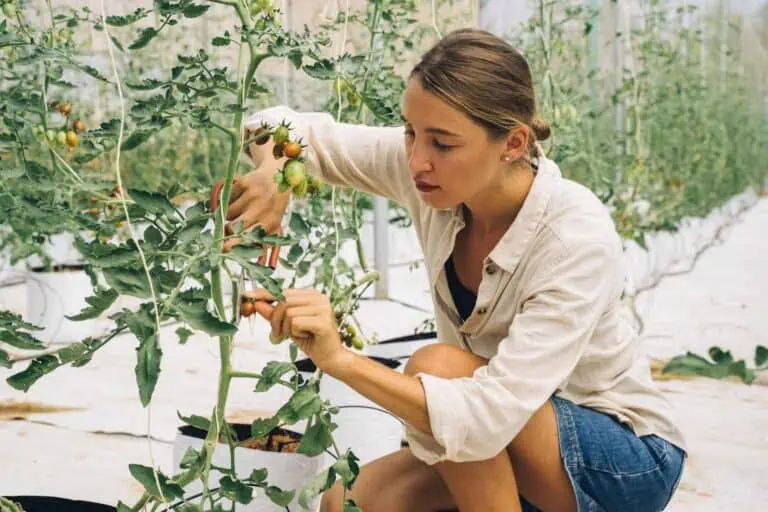
Staking and Pruning
Staking your tomato plants is a vital practice that promotes healthier plants and improves fruit quality. By keeping the plants off the ground, staking reduces the chances of disease transmission and makes it easier to tend your garden. You can use cages, stakes, or trellises, depending on the size and habit of your tomato variety.
Start staking once the plants are about 1-2 feet tall. Tie the main stem to the stake using soft twine or cloth strips, making sure not to damage the stem. Add more ties as the plant grows, always leaving a bit of slack for growth.
Pruning, on the other hand, involves removing the non-essential parts of the plant to direct more energy into fruit production. Prune your tomatoes by removing suckers—small shoots that emerge from the joint where a branch meets the stem. Use your fingers or a sharp, clean pair of pruners to remove these when they’re about 2-4 inches long. Be careful not to over-prune, as leaves are necessary for photosynthesis and fruit protection.
Remember, determinate (bushy) varieties of tomatoes require less pruning than indeterminate (vining) ones, as they naturally grow to a predetermined size and set all their fruit at once. Indeterminate varieties, on the other hand, keep growing and setting new fruit until the first frost, so they benefit more from regular pruning.
By staking and pruning your tomato plants, you’ll encourage better air circulation, reduce disease pressure, and maximize yield in your tomato garden.
Pest and disease management
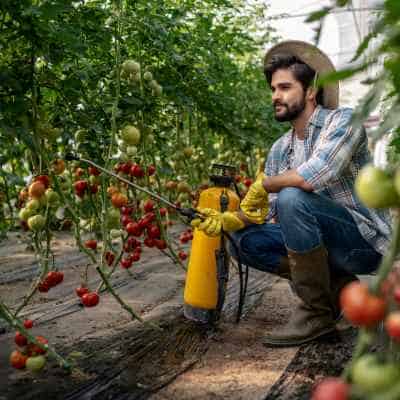
Pest and disease management is another crucial aspect of maintaining a healthy tomato garden. Regularly inspect your plants for signs of pest infestation or disease. Common tomato pests include aphids, hornworms, and whiteflies, which can be managed using organic insecticides or by introducing beneficial insects like ladybugs and lacewings.
Tomatoes can also succumb to diseases such as blight and powdery mildew. These can be managed by applying organic fungicides and ensuring good air circulation around your plants. Proper crop rotation is also essential in disease prevention – avoid planting tomatoes in the same area two years in a row.
Remember, a healthy, well-maintained plant is less likely to succumb to pests and diseases. Regular watering, balanced fertilization, and proper spacing all contribute to the overall health of your tomato plants, making them more resistant to pest and disease attacks.
Watering and Nutrient Requirements
Tomato plants have specific watering and nutritional needs for their optimal growth. As a rule of thumb, tomato plants require approximately 1-2 inches of water per week, depending upon the weather conditions. During hot, dry periods, this amount may need to be increased. Water deeply and consistently, making sure water reaches the roots. Overhead watering should be avoided to reduce the risk of disease.
In terms of nutrition, tomatoes require a balanced fertilizer rich in nitrogen, phosphorus, and potassium. Nitrogen promotes leafy growth, phosphorus aids in healthy root development and fruit set, and potassium contributes to overall plant health and disease resistance. The use of a slow-release granular fertilizer or a water-soluble fertilizer can ensure your plants get the necessary nutrients. Remember to follow the package instructions for application rates and frequencies. Regular soil testing can also help identify any nutrient deficiencies and guide your fertilization practices.
Tomato Harvesting Tips
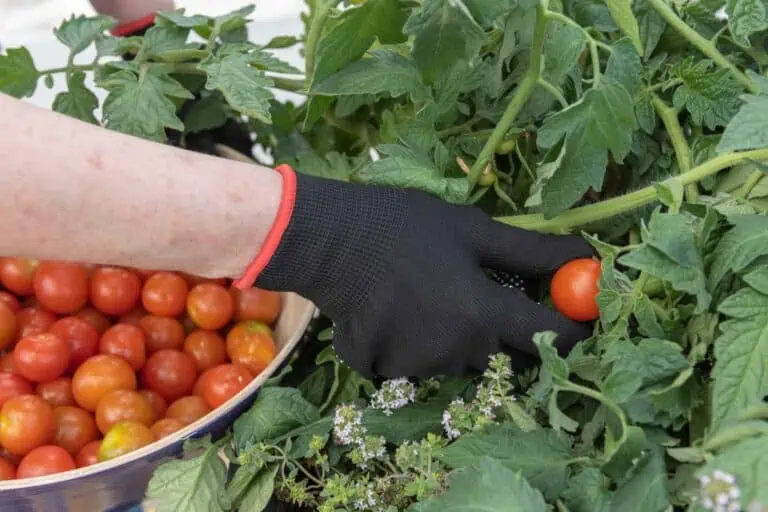
Identifying ripe tomatoes is vital to enjoy the fruit at its best. Ripe tomatoes will exhibit a uniform color, typically bright red for common varieties, but color can vary for different types. Heirloom varieties might turn out yellow, orange, purple, or even striped. The fruit should feel plump and firm, yielding slightly to gentle pressure. Another good indicator is if the tomato easily detaches from the stem with a gentle tug. Remember, tomatoes continue to ripen off the vine, so when in doubt, it’s better to pick slightly early and allow the tomato to ripen indoors at room temperature. Avoid refrigerating tomatoes as it can affect their texture and flavor.
Proper harvesting technique
To properly harvest tomatoes, support the fruit in the palm of your hand and gently twist it until it comes free from the stem. Avoid pulling or yanking the tomato as it can damage the fruit and possibly harm the plant. It’s also recommended to use a pair of clean, sharp garden shears or scissors to cut the stem, leaving a small portion attached to the fruit. This helps in preserving the fruit’s protective layer, thereby extending its shelf life. Harvesting should ideally be done in the cool of the morning as heat can cause the fruit to become too soft. Lastly, always handle your tomatoes gently to prevent bruising and damage, and remember to wash them thoroughly before consumption.
Post-Harvest Care and Storage

After harvesting, proper storage of tomatoes can significantly prolong their freshness and taste. If you’ve picked tomatoes that are still a bit green or not fully ripe, keep them stem side down in a paper bag or box at room temperature and out of direct sunlight. They will continue to ripen gradually over a few days. Fully ripe tomatoes should be consumed as soon as possible for the best flavor. If you have an abundance of ripe tomatoes that you can’t consume all at once, you can store them at room temperature away from direct sunlight. Remember, never refrigerate fresh tomatoes, as cold temperatures can cause the texture to become mealy and can dull the flavor. For long-term storage options, consider processing methods like canning, drying, or freezing your tomatoes.
Conclusion
In conclusion, successful tomato cultivation requires careful attention at all stages of the plant’s life. Begin by selecting a suitable variety based on your climate and space availability. Prioritize adequate sunlight and warmth, and invest in quality, well-draining soil to promote robust growth. Regular watering and fertilizing are crucial, but avoid overwatering or overfeeding as these can lead to disease and poor fruit quality. Monitor plants for common diseases and pests, applying organic pest control methods where necessary. Harvest tomatoes carefully to preserve their quality, and store appropriately to extend their freshness. Whether you’re a novice gardener or a seasoned green thumb, these tips should help you enjoy a bountiful tomato harvest.
Growing your own tomatoes at home can be an incredibly rewarding endeavor. There’s a special kind of gratification in nurturing plants from seeds or saplings and watching them flourish into a bountiful harvest. Your homegrown tomatoes not only taste better, but they are also a rich source of nutrients and free from harmful pesticides. No matter the size of your garden, every attempt at home cultivation is a step towards healthier living and sustainable practices. So, roll up your sleeves, get your hands dirty, and experience the joy of growing your own tomatoes. You’ll be amazed by the difference in taste, and you’ll never look back. Remember, every great gardener started with a single seed. Your tomato-growing journey begins now!

